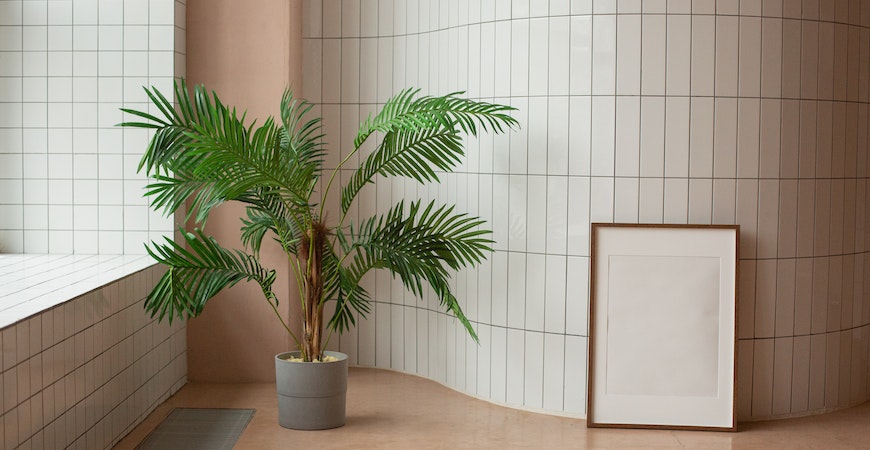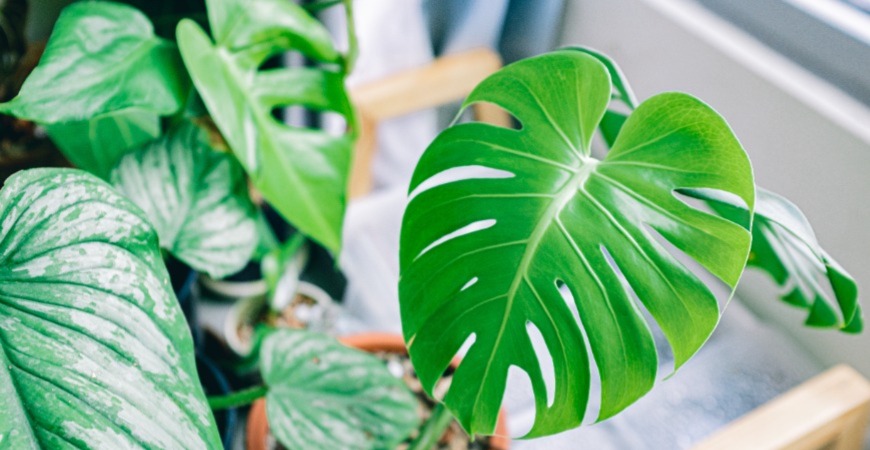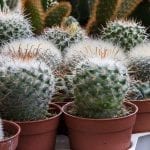
Top 5 Low-Light Houseplants
You don’t have to be a fan of Simon and Garfunkel’s Sound of Silence to be interested in low-light houseplants. Maybe your home is blocked from the sun’s rays, or maybe you want to bring a little green indoors while the days are unbearably short.
Regardless of the reason, we’re here to show off the list of our top five favorite houseplants for low lighting. So, don’t fret about a lack of sunlight or shortening days; instead, check out our picks.
Parlor Palm
Parlor palms have long been a popular low-light houseplant for indoor gardeners. They make excellent additions to entranceways, living rooms, or along your home’s northern exposures.
These palms grow at a slow yet steady pace. It can take them years to reach their maximum height, which tends to be around six feet indoors and 10 feet or more outdoors.
Beyond their deep green and finely detailed leaves, parlor palms can also produce small yellow flowers. For female plants, the blooms can offer a soft yet enticing fragrance, though male plants only offer scentless flowers.
Parlor palms can also tolerate lower temperatures than most plants. However, they will die if exposed to frost, so keep them away from open windows or anywhere they may experience drafts during winter.
Due, in part, to their low-light nature, parlor palms are relatively easy to care for. In most cases, it’s too much care that will likely cause their downfall.
So, wait to water your plant until the top inch of the soil feels dry. Additionally, you can use more water if you notice the leaves begin to turn yellow.
Overwatering can result in root rot or fungal development on the leaves. You may also be forced to repot the palm — a task that must be done with lots of care due to the plant’s delicate root structure.
Philodendron
Another popular low-light houseplant, philodendron, come in one of two varieties: vining and non-climbing.
Vining varieties have, well, vines that creep along whatever structure the plant sits on. Non-climbing philodendrons tend to grow upwards and tend to resemble shrubs.
Regardless of which type you choose, you should expect your philodendron to grow rapidly with adequate care. And because these plants are so low-maintenance, almost anyone can reach that level of care.
Philodendrons also make excellent natural air purifiers. Placing them in a kitchen, bedroom, or living room may help remove harmful toxins from the nearby air.
While these plants won’t prosper in direct, bright light, they do need at least a little indirect light to thrive. A lack of light will usually result in vines with fewer leaves and more space between each leaf.
If you notice more than a few leaves have turned yellow, it may be time to rethink your watering schedule. Try only to water philodendrons when the top inch of soil is completely dry, and avoid leaving the plant in soggy soil.
Another sign that something’s gone wrong is brown leaves. If they’re also mushy or soft, then the issue is overwatering.
If the leaves’ edges turn brown and start to curl, increase your watering frequency and place the plant in a less sunny spot. Brown spots on the leaves circled by yellow can also mean the plant needs more humidity. Misting the leaves or placing a tray of pebbles and water can fix the issue.
If you’ve tried all of the above and you’re still noticing browning leaves, try giving your philodendron warmer water. Extremely cold water can shock the plant.
Finally, it should be noted that some philodendron varieties can be toxic to pets and children. If you have either, you may want to check out a different low-light houseplant on this list.
Rabbit’s Foot Fern
If you’re looking for low-light houseplants that add a distinct look and perhaps some good luck to your home, consider the rabbit’s foot fern. Often referred to by its more scientific name, the davallia fern, this plant requires little light but lots of humidity to thrive.
Typically grown as a hanging plant, the most eye-catching trait of these ferns is the furry-looking rhizome from which the plant grows. The rhizomes resemble fuzzy animal feet — thus its name — slowly creeping out of the plant container.
These ferns can be a little more finicky than others on this list. Yet, once it is set up in a spot where it can thrive, disturbing the plant too much can lead to negative results.
Rabbit’s foot ferns should ideally be placed in an area with high levels of humidity and that doesn’t receive an abundance of direct light. A bathroom with a north or east-facing window would be ideal.
If you can’t find a spot that’s both high in humidity and low in direct light, choose the shaded or partially shaded spot. Then use a mister to dampen the rhizomes every day or two.
Over the winter, rabbit’s foot ferns enter a somewhat dormant state. You can reduce watering and misting during this time, but do not skip it altogether.
Rubber Plant
While greenery made from rubber would likely thrive in a low-light setting, the rubber plant is an actual living, breathing tree that is among the best plants for beginning indoor gardeners.
Rubber plants can reach extraordinary sizes in their native South Asian habitat. In homes, however, they tend to stop once they’ve reached the size of a medium houseplant or a smaller tree.
Because they vary in size and tend to adapt to their living spaces, it’s best to buy a rubber plant when it’s young. That way, it can adjust to its living situation earlier and find ways to thrive.
A member of the ficus family, rubber plants have lengthy leaves that can grow up to a foot long. Depending on the variety, the leaves may feature a wide range of colors, from deep green to wine to creamy pink.
Now, most rubber plants need some light. However, hot, direct light can result in sunburnt leaves, meaning it’s best to find a spot where it can receive bright, indirect light — such as an eastern-facing window.
While they do adapt to low-light situations, keep an eye on the status of the lower leaves. If they begin to become pale or fall off, it’s a sign the tree needs additional indirect light.
Rubber plants require weekly watering during warmer seasons. Once temperatures start to fall, you can reduce watering to every two or three weeks.
Their leaves can also indicate if they need a watering adjustment. Sagging leaves mean the plant needs more water, while brown or yellow leaves are a sign of overwatering.
Snake Plant
Plants that are almost impossible to kill make the ideal low-light houseplant. One example is the snake plant.
Snake plants prefer low light, are drought-resistant, and come in a variety of shapes and sizes. They can fit into almost any interior design style, and they also help clean the air inside your home!
Truly, most snake plant varieties can only be harmed by the cold or by overwatering. In winter months, it can go a couple of months without water and still grow.
Even in warmer weather, try not to water a snake plant more than once every two weeks or when the soil feels almost completely dry. If you choose to go overboard with your watering, it’ll likely result in root rot.
Snake plants will grow faster if it receives a few hours of direct sun. However, they’ll still grow at a healthy albeit slower pace if only receiving indoor light.
Generally, though, snake plants will adapt to most situations they find themselves in. So, they are ideal first plants for burgeoning indoor gardeners.
Low-Light Houseplants Can Brighten Anyone’s Day
Whether you’re dealing with shortening days or have a home mostly untouched by the sun’s rays, there are a variety of houseplants that will not only survive but thrive in low-light settings. With our favorite low-light varieties populating your home, you won’t miss out on a vibrant indoor garden.
For more gardening tips for both indoors and outside, bookmark AskWetAndForget.com and check back regularly.












